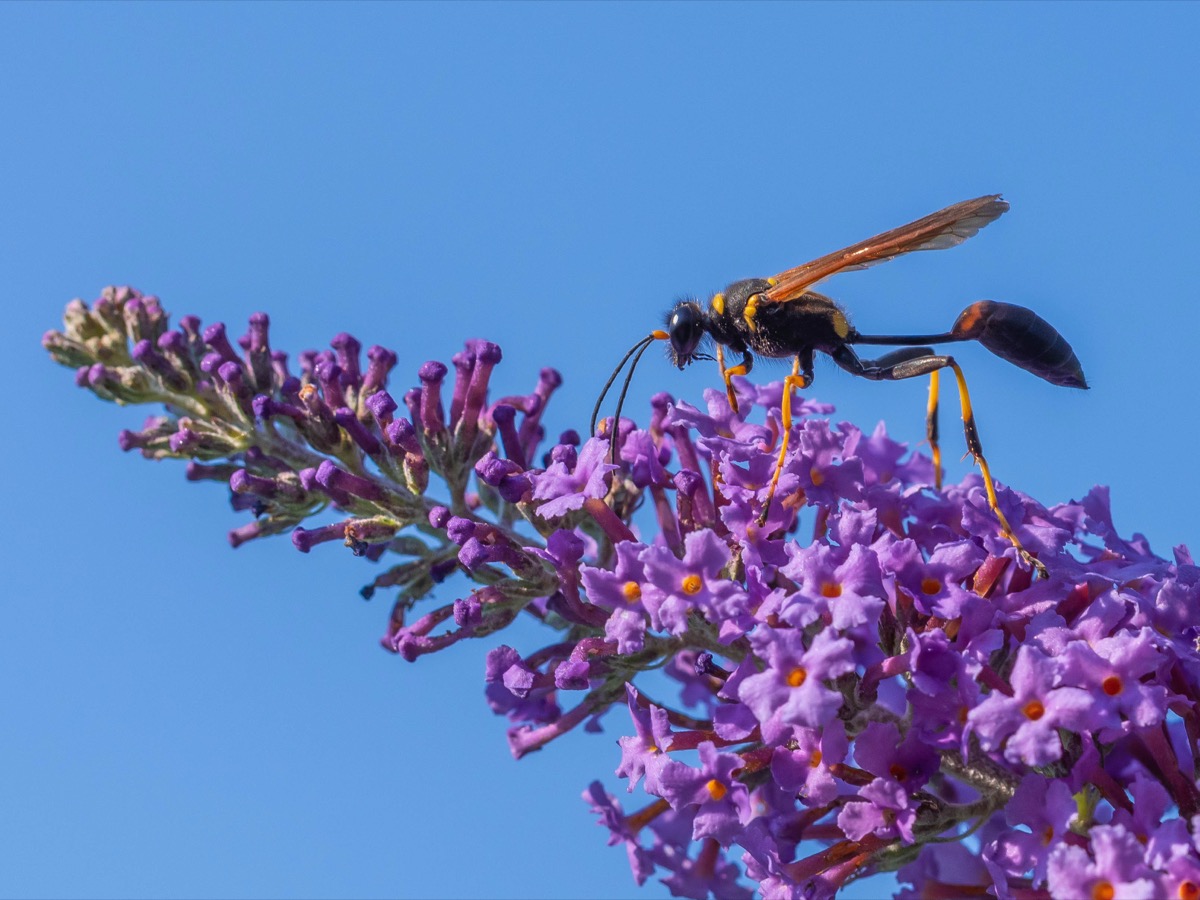Characteristics
- Slender body, often black or black and red
- Elongated petiole between thorax and abdomen (prominent “wasp waist”)
- Straight antennae, narrow wings
- Females exhibit highly developed digging or nest-building behavior
Habitat
Sphecidae are found in:
- Sandy areas, embankments, dunes, gravel pits
- Old walls, rocks, sunny banks
- Dead wood or hollow stems (for some species)
- Nectar-rich flowers (umbellifers, asteraceae…)
Biology
- Solitary wasps, no colonies
- Nesting:
- Soil: burrows with multiple brood cells
- Natural or artificial cavities
- Paralyzed prey by targeted sting, deposited alive in the nest
- One larva per cell, feeding on stored prey
- Adults feed on nectar or sometimes honeydew
Notable Genera
- Sphex – Grasshopper-hunting wasps, with highly studied behavior
- Ammophila – Slender black-and-red wasps, hunt caterpillars, dig in sand
- Sceliphron – Builds mud nests, captures spiders
- Chalybion – Metallic wasps, sometimes reuse old Sceliphron nests
Distinctive Features
- Highly ritualized hunting behavior
- Impressive navigation and orientation abilities
- Some species learn and adapt their behavior based on conditions
- Ecological role in regulating herbivorous insect populations
